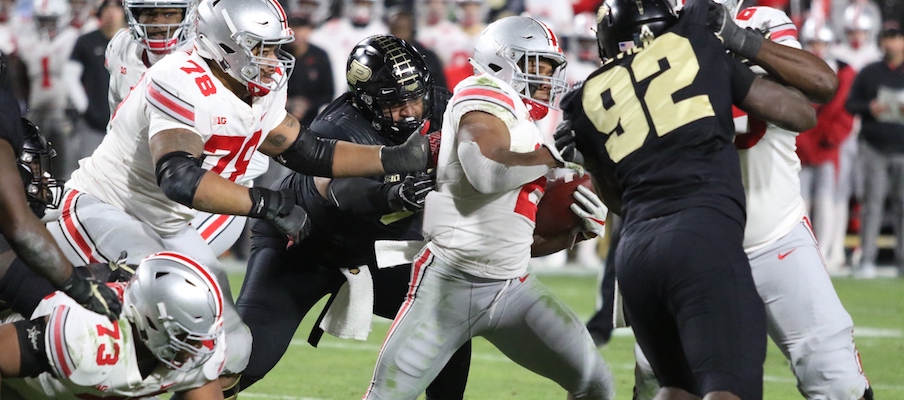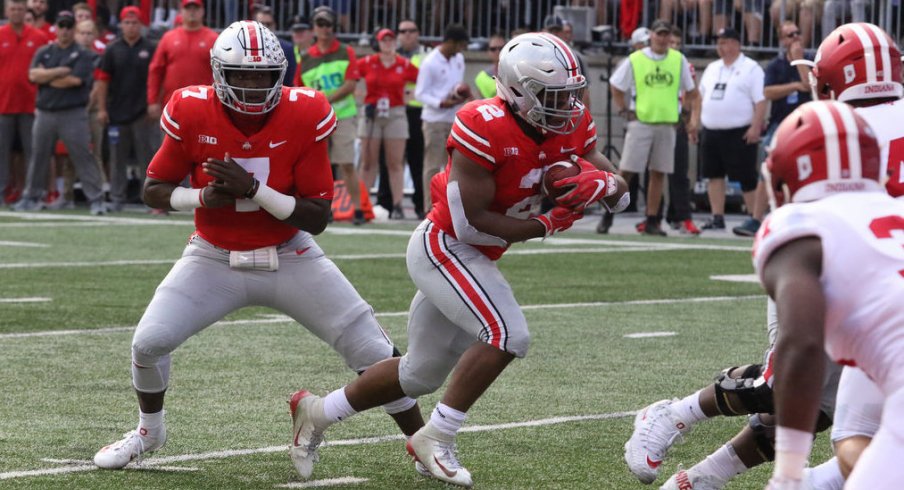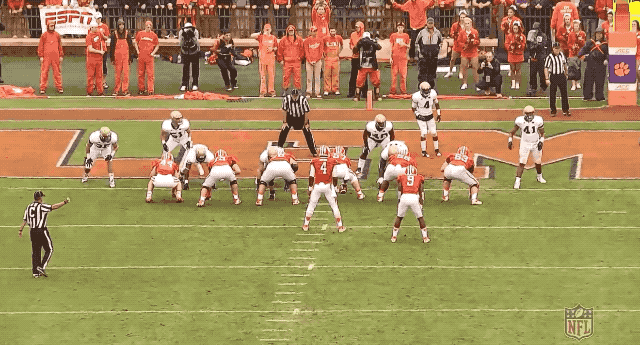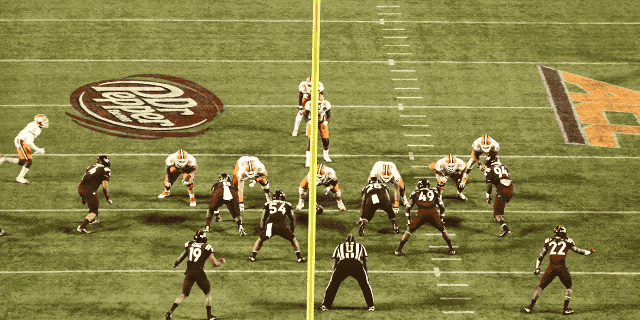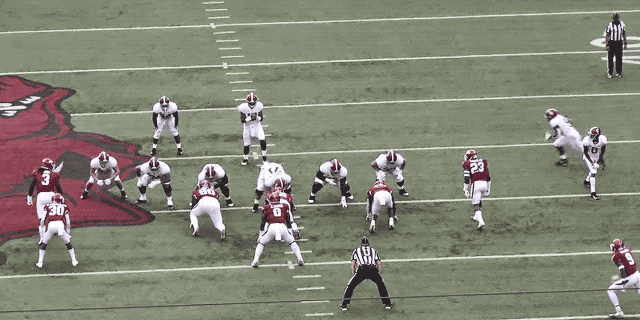FILM STUDY: OHIO STATE'S RED ZONE DIFFICULTIES CAN BE SOLVED BY MORE THAN QUARTERBACK RUNS
"We missed a few passes down there that we've hit (in previous weeks) ... but also, we have to be able to pound the ball and get three yards when we need to." - Ohio State offensive coordinator Ryan Day on his team's recent struggles in the red zone.
Nearly every coach will agree that the most critical element in finding success near the goal-line is a team's mentality. No matter how well prepared they may be in terms of scheme and execution, at some point, they must find the will to win a one-on-one battle with their opponent from a purely physical standpoint.
Many pundits and fans agree that this edge is missing from the Buckeye offense right now, after failing to punch the ball into the end zone on any of their five trips inside the Purdue 20-yard line two weeks ago. However, mentality and effort will only get so far with a unit that has completely changed from its 2017 form.
While OSU has seemed incapable of running the ball effectively at any point on the field recently, their struggles are magnified in the red zone once the defensive secondary no longer plays in fear of a Dwayne Haskins Deep Ball™. In the past, this extra attention from a safety playing near the line of scrimmage could be negated by the running threat of Buckeye quarterbacks like Braxton Miller or J.T. Barrett, making the team one of the nation's best at scoring touchdowns inside the 20.
With athletic backup QB Tate Martell sitting right there, a special package featuring the redshirt freshman seems to be the obvious answer to many, and one Ryan Day and the other coaches are "evaluating right now." However, such a move would require such a heavy investment in practice time to ensure Martell is prepared to do more than simply run a zone-read, that the risk may not justify the reward.
However, Day and Kevin Wilson should consider changing things up once inside the red zone. While they often use a high tempo to catch defenses off-guard down there, the schemes and personnel hardly change from what the team runs elsewhere on the field, often relying on the same, 11 personnel (1 RB, 1 TE) that lines up on virtually every other snap.
This is a departure from how many of their peers operate, however. According to a report from XandOLabs.com, 81% of offensive coaches have a separate plan dedicated to the red zone, with 69% saying they will vary their philosophy once there, leading many defensive coaches to not use a yard-marker to determine where the red zone begins, but rather when the offense changes their play packages.
Ohio State has regularly relied on their tight zone run to pound the ball between the tackles in this area, but that play alone does not negate the extra bodies near the line without an option element.
Per the XandOLabs.com report, the most popular run concept in the red zone is
Power, which pulls the backside guard around to lead the back behind a wall of down blocks. In theory, this concept negates any extra defenders to the play-side, as the pulling guard gives the offense more blockers there and forces any unblocked backside defenders to fight through traffic before making a play.
Against Purdue, however, the backside ends were still able to crash down and make a play on the runner while the tackle blocked the linebacker.
To get the most out of this concept, the Buckeyes should consider using 12 personnel (1 RB, 2 TEs) more often. By adding an extra gap to either side of the formation, the defense's edge defenders are a few yards farther away from the play, making it harder to come downhill and chase the runner. Meanwhile, the offense still has a numbers advantage to the play-side thanks to the puller (#78 in the clip below).
Another way to hold these edge defenders is by leaning on
Jet motion. The OSU coaches have often brought Parris Campbell across the formation at full speed, giving him a quick handoff behind a cadre of blockers around the edge.
This motion was especially effective with Barrett at the helm, as it could be used as the sweep element in the
Power-Read concept that had been so effective near the goal-line. The QB read the unblocked front-side end to decide whether to give on the sweep or keep on a
Power run for himself.
Since Haskins lacks the skillset to carry the ball for big yardage on such a play, the Buckeyes could take another page from the Clemson playbook and combine the
Jetmotion with a regular
Power run, asking the QB to simply give on one of two handoff options instead of running for himself. Though the QB does not negate a defender himself by posing a threat to run, the combination of the
Jet motion and inside blocking scheme still puts the end in conflict.
The same theory also applies when Ohio State wants to run
Tight Zone. Instead of blocking the play for the sweep itself, simply using the motion as bait to will attract the extra defender that would otherwise gum up the box (watch #30 in the clip below).
Entire article:
https://www.elevenwarriors.com/ohio...can-be-solved-by-embracing-their-new-identity




